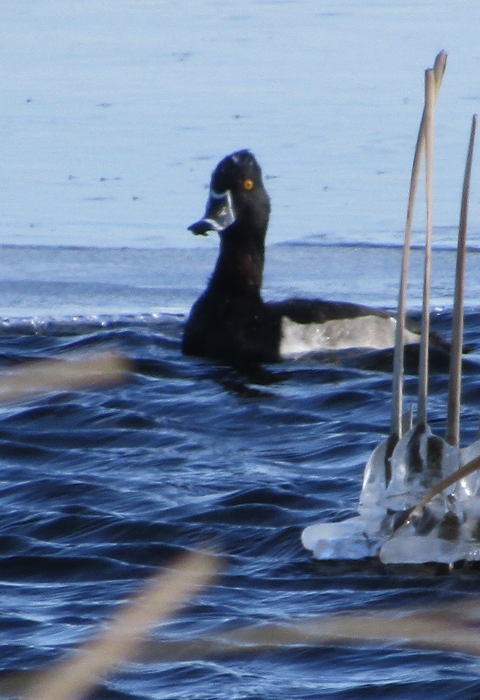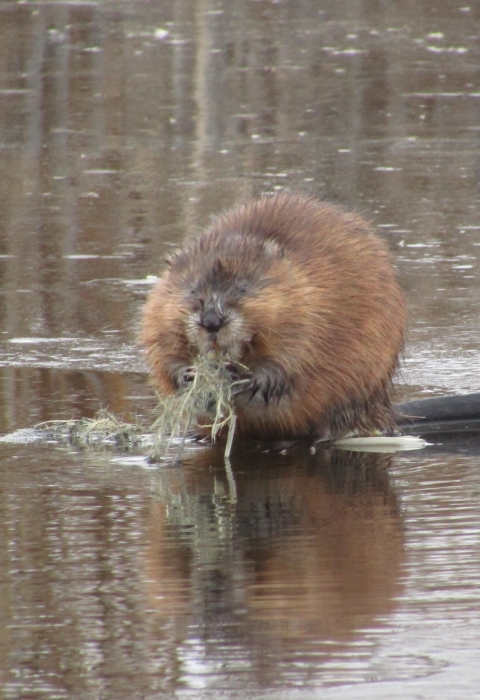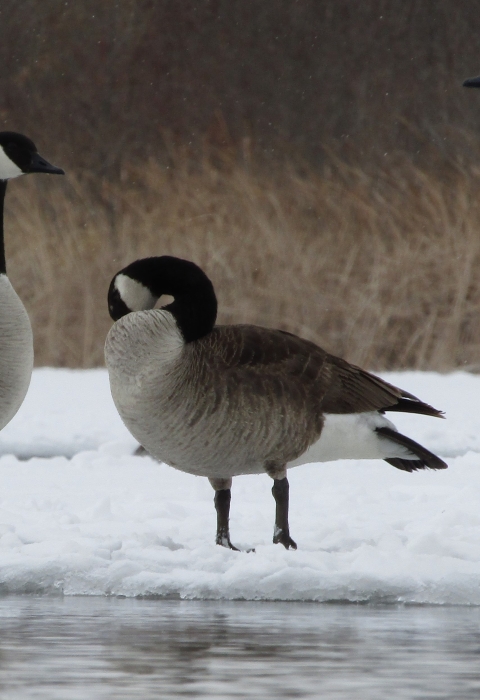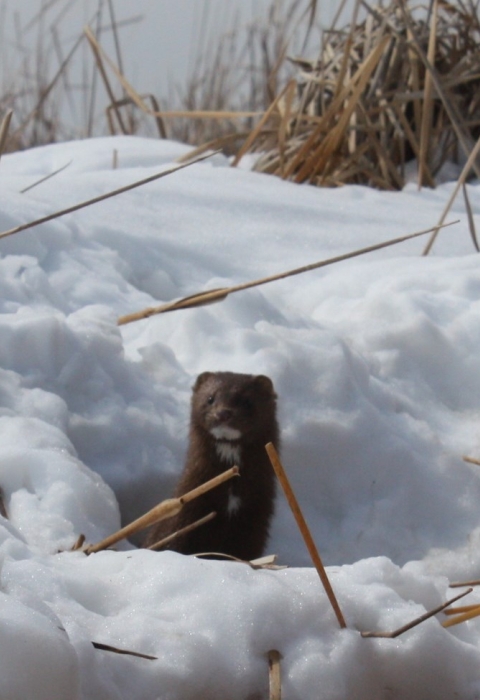Seasons of Wildlife
There is always something to see and do on the prairie if you take the time. Come in the spring to see waterfowl migrate to their nesting ground, look for blooming Pasque flowers or collect wild edibles for personal use. Come in the summer to see the blue-winged teal hen tend to her brood, see blooming blazing star, listen to the buzz of the bees or paddle through a wetland. Come in the fall to see flocks of waterfowl, monarch butterflies beginning their migration south and muskrats fortifying their homes to be prepared to overwinter. Come in the winter to follow otter tracks in the freshly fallen snow, hear a coyote bark and take in the stillness.
Featured Species
Blue-winged Teal
At Morris Wetland Management District, we grow ducks! We provide breeding habitat for more than 15 species of ducks, geese and swans. The most common nesting duck is the blue-winged teal. Like most prairie ducks, blue-winged teal need both wetlands and grasslands; they feed, rest and raise their ducklings in shallow marshes, but build their nests in grasslands. They are common in the area but look carefully – blue-winged teal are one of our smallest ducks, and they like to feed and rest along the edges of shallow wetlands. They’re among our latest ducks to arrive in spring and earliest to depart in fall.
Dakota Skipper
The Dakota skipper is a small, orange-brown butterfly. It may not be glamorous, but it is very special. In 2014, the Dakota skipper was listed as threatened under the Endangered Species Act. The Dakota skipper depends on high quality native prairie. With less than 1% of the original tallgrass prairie left in Minnesota, it’s not hard to see why some of our prairie butterflies are in decline.
Western Meadowlark
With their warbling, musical call, the western meadowlark has long been a beloved bird in western Minnesota. Their appearance is as distinctive as their call: meadowlarks are mostly brown, with a bright yellow breast crossed by a black, V-shaped mark.
Meadowlarks prefer large, open areas of grassland, but the males like to have a small perch to sing from – a low shrub or fence post will do. Long-time residents of the area often comment on how they don’t see many meadowlarks anymore. Morris Wetland Management District is working hard to help protect and restore the grassy areas these songbirds love.



